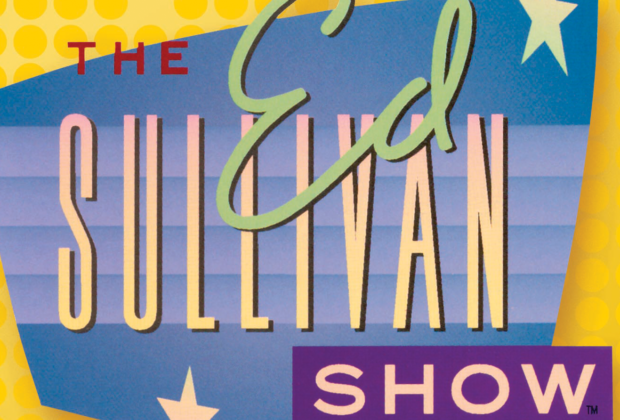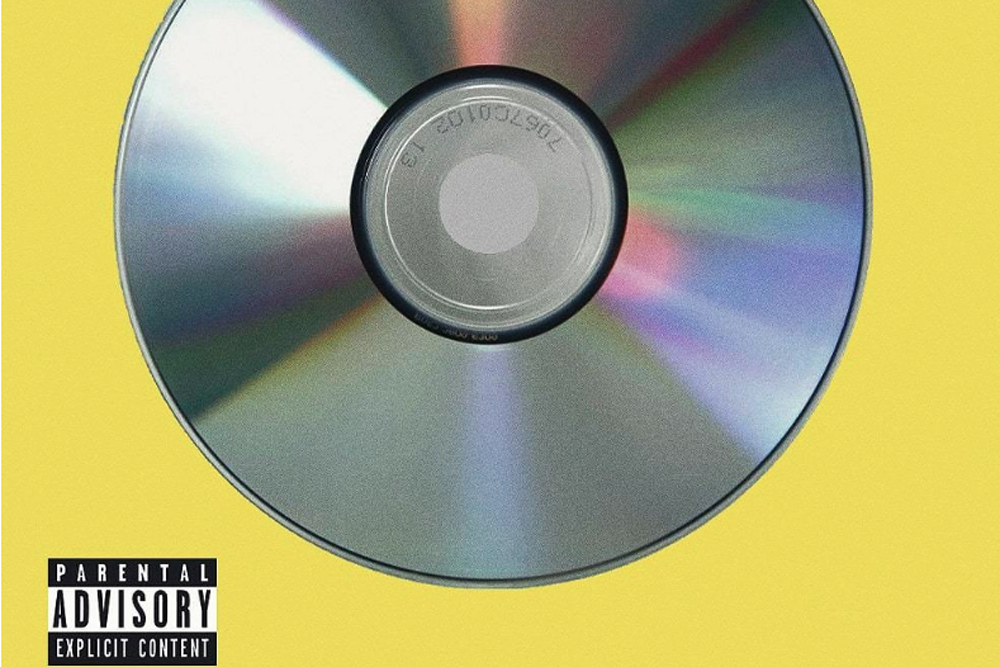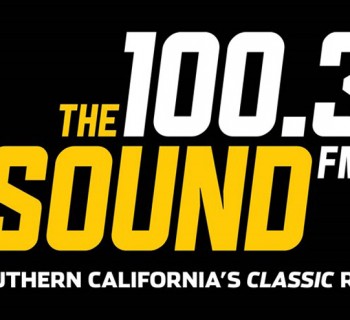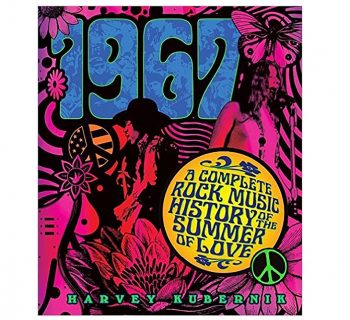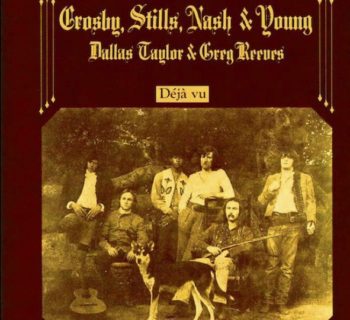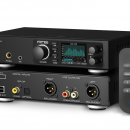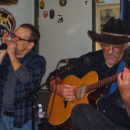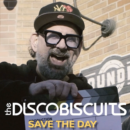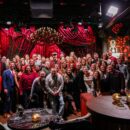The Ed Sullivan Show which was broadcast Sunday night at 8 pm on CBS from 1948-1971 wrapped its final episode nearly 50 years ago and charmed TV viewers for the final time on Sunday night June 6, 1971, it officially joins the streaming universe and lives on forever.
UMe in June announced an agreement with SOFA Entertainment Inc. for the global digital rights to The Ed Sullivan Show library, which encompasses the influential television program’s historic 23-year primetime run on CBS.
This marks the first time that Ed Sullivan Show performance and guest segments will be officially available in their entirety across streaming services worldwide on The Ed Sullivan Show’s official YouTube channel, the first segments showcase landmark live musical performances.
A UMe media release further described the collaboration and the voluminous gems in this vast catalog of iconic clips that have primarily only been available in excerpted versions on EdSullivan.com or as low-resolution digital “bootlegs.”
“Scores of rarities will also be available digitally for the first time. Icons and up-and-comers appeared on The Ed Sullivan Show, which welcomed entertainers and influential figures from just about every category of cultural relevance, including music, comedy, sports, film, dance and opera. Many segments will be upgraded to high-resolution clips as part of UMe’s strategic curation of a national treasure that has achieved international acclaim.
“Available now, the first seven segments to stream under this new arrangement celebrate music artists, with a new video premiering every day and thousands more clips from the catalog to stream over the next three years.
“UMe plans one or more videos daily on The Ed Sullivan Show’s official YouTube channel and EdSullivan.com, both newly updated.
“Bruce Resnikoff, UMe President & CEO, said, ‘UMe is proud to continue its successful relationship with SOFA Entertainment. Together we will transform an incredible treasure trove from The Ed Sullivan Show to the streaming era and to new audiences. Ed Sullivan was a pioneer of his time and is responsible for many pivotal TV performances and significant moments in entertainment history.’
“SOFA Entertainment is thrilled to continue its decade-long relationship with UMe,” said Andrew Solt, CEO of SOFA Entertainment.
“The UMe team has the passion and expertise to honor Ed Sullivan’s legacy and create new ways for people around the world to enjoy it. I’m overjoyed that the SOFA Entertainment stewardship is now in the hands of my son, Josh, who has experience with digital content including five years at Google.”
Josh Solt, who is now President of SOFA Entertainment, said, “We have enormous potential to build The Ed Sullivan Show into a global brand. I am extremely excited that UMe shares SOFA Entertainment’s vision to make The Ed Sullivan Show accessible to existing fans and future generations.”
The Ed Sullivan Show featured history-making music performances from Elvis Presley, the Beatles, the Doors, the Rolling Stones; Diana Ross & the Supremes, Four Tops, Gladys Knight & the Pips, Marvin Gaye, Neil Diamond, Smokey Robinson & the Miracles, the Beach Boys, the Jackson 5, the Supremes, and the Temptations. Plus comedians Joan Rivers, Rodney Dangerfield, Richard Pryor, Carol Burnett, Lucille Ball, George Carlin, Johnny Carson, Smothers Brothers, Stiller & Meara; Athletes Jackie Robinson, Mickey Mantle, Willie Mays, Muhammad Ali, Joe Namath, Arnold Palmer; Hollywood stars Julie Andrews, Elizabeth Taylor, Peter Sellers, Gregory Peck, Steve McQueen, Sophia Loren, Marlon Brando, Rock Hudson; Stage greats from the casts Of Oliver, Hello Dolly, South Pacific; Opera Singers Maria Callas, Beverly Sills; Artists Salvador Dalí, José Greco; Dancer/Choreographer Rudolf Nureyev; and political figures, Presidents Dwight D. Eisenhower and John F. Kennedy.
The Ed Sullivan Show brought the hottest performances from around the world and introduced emerging talent to America’s living room every Sunday night. Families also gathered together on Sunday nights to see their favorite film stars and sports figures.
Ed Sullivan, who was personally involved in his show’s bookings, was known to have said he wanted to “entertain all of the people some of the time” – from providing grandparents with glimpses of vaudeville to offering parents Hollywood stars and sports figures to bringing teenagers their next poster idols, and youngsters the Italian mouse, Topo Gigio. Over the course of two decades, he cast aside racial, political and cultural boundaries to ensure that audiences witnessed the best and the brightest.
In a time of segregation, Ed Sullivan, an influential Civil Rights advocate, invited African-American actors (Pearl Bailey, Diahann Carroll), athletes (Muhammad Ali, Jackie Robinson), comedians (Richard Pryor, Flip Wilson) and musicians (Harry Belafonte, James Brown, Motown artists such as Four Tops, the Temptations, the Supremes), to name just a few, to appear on the show.
For many Motown artists, a performance on The Ed Sullivan Show represented a pivotal career milestone bringing their talents to mainstream America and catapulting them to the top of the charts with breakout success. Sullivan was the first to bring country music (Chet Atkins, Johnny Cash, Loretta Lynn, Jimmy Dean, Brenda Lee and Buck Owens) to national television viewers.
Ed Sullivan booked international talent, entertainers, performers and personalities from the UK. (18 Groups/Singers of the British Invasion, Julie Andrews, Cliff Richard), France (Johnny Hallyday, Edith Piaf, Brigitte Bardot), Italy (Sophia Loren, Gina Lollobrigida), Spain (Andrés Segovia, Salvador Dalí, José Greco), Germany (Obernkirchen Children's Choir), Japan (The Blue Comets), Ireland (Peter O'Toole, the Clancy Brothers, The Dubliners) and Israel (Prime Minister David Ben-Gurion).
The Ed Sullivan Show is the most popular primetime variety show in American history. For nearly a quarter century, Ed Sullivan hosted the greatest array of talent on television, including the Beatles, the Rolling Stones, Elvis Presley and Motown artists such as the Supremes, the Temptations and the Jackson 5.
The Ed Sullivan Show showcased a wide variety of pop culture from the worlds of music, comedy, novelty and much more. The library houses 1,000 hours and over 10,000 performances.
In 1990, Andrew Solt formed SOFA Entertainment Inc. and acquired The Ed Sullivan Show from the Sullivan family. The Ed Sullivan Show is the most respected and revered variety show in television history. SOFA Entertainment is the copyright holder of the original Ed Sullivan programs and over 150 hours of newly created programming.
“Sullivan knew how to give a show that was for every generation that might be watching,” emphasized Andrew Solt during a September 2011 phone interview. “If you look back the show was such a launching pad for such great important iconic moments. Whether it’s Elvis or Bo Diddley.
“When the Beatles stepped onto Ed Sullivan’s New York stage on Sunday, February 9, 1964, to make their American TV debut, 86% of all TVs on at that hour—73 million Americans—were tuned in. It was the most watched program in history to that point and remains one of the most watched programs of all time. To some, it will always be remembered by his introduction: ‘Here they are—the Beatles!’”
In 2011 Solt commented about the world of black-and-white film that captured the monumental televised musical performances of the Beatles in America.
“I think because the footage is black and white it takes you back even more into an era which to today’s generation, nobody understands why anything was ever in black and white. I think what really comes across is their excitement, their charisma, their talent, and when you start to think those haircuts were considered revolutionary, weird and longhair, that those Beatles boots that they wore were really different, that they were so unusual. And in retrospect it’s humorous, but that is Day 1 of the evolution of rock ’n’ roll post-Elvis.
“That era of the Sixties starts February 9, 1964, in America. And it is the first time rock ’n’ roll ever comes to us. Because before that, rock ’n’ roll was an exported item. It was never imported. And they reinvent it and bring it back and it changes the face of American pop music completely. And that happened there and the city goes mad, the country goes wild, the whole place is affected, and the beauty is watching the faces of these four young guys. And then knowing that they’ve waited for this moment. They came to America with a No. 1 record. They had it all lined up. And they told that to Brian and it happened.
“And for those of us who remember the music arriving around September 1963, by the time they get to February, it’s after the John F. Kennedy assassination and we had been through the doldrums of a very horrific time where everything is questioned. Bomb shelters. I never thought I would see grownups running around, crying like the world had ended. I didn’t know what was going on, it was so severe.
“And then 10 weeks later or less, these guys land on our shores, and euphoria reins. And this is the moment. And this can now be enjoyed by people around the world in a way that matters,” stressed Solt.
Dr. James Cushing of the Cal Poly San Luis Obispo English and Literature Department offered insights about the arrival of the Beatles on The Ed Sullivan Show.
“John F. Kennedy had hair, he had erotic charisma, he had TV stardom and a great voice -- and then, as it must with all Dionysus stories, tragedy struck. Author Don DeLillo wrote that Dallas ‘broke the back of the American Century.’ End of this Dionysus cycle? Apparently so....and then, seemingly out of nowhere (Liverpool?), on The Ed Sullivan Show, two months and two weeks after November 22, 1963, on the same TV that gave you JFK, we get -- who could have predicted it? – Four Dionysian heroes who wear the garb of the singer Orpheus!
“My God, the hand of fate traded Kennedy for the Beatles! And so they blended Dionysian ecstatic energy with Orpheus' romantic loyalty to Euridice for an erotically unbeatable moment.”
“The Beatles changed the game,” acknowledged Dino Danelli drummer of the Rascals. “I mean, that’s the reason we got together. Felix (Cavaliere) and I were in Las Vegas together when the Beatles came over. And we just looked at one another and said, ‘Wow. Look at what these guys are doing.’ We heard them on the radio before we saw them on Ed Sullivan. That was it. We knew. We had just met a little bit previously and wanted to do something together seriously in a band. And then here comes these guys. So they were responsible for us to really making the jump and putting the Young Rascals band together. We had an animal name. We wore knickers in the early days and had mop tops. We then did the Sullivan show! ”
“The relationship between Berry Gordy’s Motown label and The Ed Sullivan Show made music and television history,” reinforced Solt in our 2011 interview.
“Soon after the Supremes’ debut on Sullivan (December 1964), it was clear that showcasing the latest Motown releases on CBS on Sunday nights (35 million viewers was average) until 1971 was a way to expose the record company’s newest hits and boost the show’s ratings. Sullivan introduced nearly all the Motown acts, including the Supremes, the Temptations, Stevie Wonder, the Four Tops, Smokey Robinson and the Miracles, Marvin Gaye, Gladys Knight and the Pips, and the Jackson 5.”
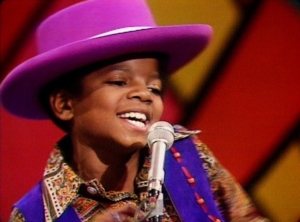
Courtesy of UMe/SOFA Entertainment
Andrew Solt’s other credits include the 1979 TV special Heroes Of Rock And Roll and 1988 feature documentary Imagine: John Lennon as well as the 1991 Warner Brothers theatrical feature film This is Elvis to the 1995 TV documentary series The History Of Rock ‘N’ Roll and 2006 home video Elvis: The Ed Sullivan Shows. SOFA Entertainment has produced approximately 400 programs for television and home video.
Filmmaker Solt and SOFA Entertainment has been very generous over the years to me providing photos and artifacts from his Sullivan library for my books and articles published in cavehollywood.com and Record Collector News magazine. I’ve viewed countless clips from Andrew’s archive aiding research which the whole world can now watch in digital platforms.
One afternoon in 2011 Andrew and I discussed the influence and impact Ed Sullivan had on the African-American world entertainment.
“Currently, there is a Prof. Maurice Berger now based at the University of Maryland, an American cultural historian, curator, and visual design art critic. We gave him some materials for his touring show of the importance of fifties television and specific shows that reflected and reached the Afro-American culture. He chose some Ed Sullivan performances. Ed had a fascination with African-American culture. He loved talent. He stood up for Harry Belafonte and Marian Anderson. Mahalia Jackson sang on the show and one of the very first shows W.C. Handy sang was on Ed Sullivan. He is considered the father of the blues.
“For one, a Harlem DJ, Dr. Jive, introduced R&B artists to America in late 1955. ‘Rock Around the Clock’ was blasting out of every transistor radio and the main titles of Blackboard Jungle. Ed loved introducing African Americans on his stage, and most of all he enjoyed giving people big breaks and the most desired gift, national TV airtime. Ed liked his role as showbiz kingpin, and he knew he was very fortunate to be such a powerful arbiter of American taste. He took pleasure in influencing our culture and acts that would make us gasp and swoon. He was an unlikely hero.”
“For us, being on The Ed Sullivan Show was so much more than record sales,” underlined Mary Wilson of the Supremes during my 2003 and 2016 interviews with her.
“It wasn’t about promoting us. It was about that we had grown up watching The Ed Sullivan Show. We had grown up watching shows where you didn’t see a lot of black people starring on those shows. For us, we were like every other family in America who spent hours watching Ed Sullivan. So for us, being on the show was such a great honor, because we were there to see the world changing. To see America changing. We were excited! We’re on The Ed Sullivan Show.
“We came from a time when a whole family of all different colors didn’t sit around watching black people on television. The Dick Clark Caravan of Stars tours where before us and there were segregated hotels.
“For us, that is what it was all about. We were part of that change. We were part of helping America to see black people, black women, being proud, beautiful and successful. It wasn’t just us, many people before us. But they didn’t have the television to expose them to that wide range of people as we did at the time when we came. We were lucky. And we stood on a lot of shoulders. But we were there when the doors opened.
“The other thing was that we were seen in color after our initial appearances were in black and white. Recently, my granddaughter was watching a DVD collection of the Supremes. And she said to me. ‘Grandma! What happened to the color?’ ‘Cause she has never seen a black and white TV!”
In February of 1976, I interviewed David Ruffin of the Temptations in Hollywood for Melody Maker.
“The Temptations were individuals who happened to sing together. I never regretted any of the songs we did and even the choreography on stage has been widely copied. I liked the dancin’ part of that group. Then you couldn’t just stand there and sing. The audience was moving and you just reflected what was goin’ on. If anything, I’d like my association with the Temptations to be remembered as that we gave something. We helped young artists get in a position.”
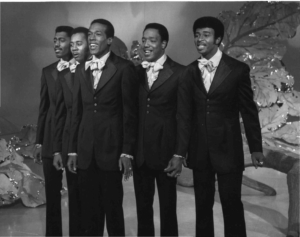
Courtesy of UMe/SOFA Entertainment
Barney Ales was Berry Gordy’s indispensable right-hand man and Motown’s ultimate insider, whose job was to get the records played and the company paid. He rose to become executive VP and general manager, but remained in Detroit in 1972 when Gordy moved Motown to California. Ales became its president in Los Angeles during his return to the firm from 1975 to 1978.
Andrew Loog Oldham discovered, managed and produced the Rolling Stones from 1963 to 1967. He worked as a producer for Motown’s Rare Earth label during the very early 1970s.
“And let’s not forget that great American soundtrack-The Sound of Young America, Jobete Music,” Andrew Loog reminded me in a 2004 conversation. “You can still hear it every day…in Motown music and the U2 single ‘Vertigo,’ sure sounds like ‘You Keep Me Hanging On’ to me.
“Barney Ales - the jewel in the crown,” reinforced Loog Oldham in a 2016 interview. “His efforts on behalf of Mr. Gordy and the artists were the primary reason the sound of young America graduated all over the world.”
“It was really a battle in those days to get black artists on network television in prime time,” Ales emailed me in 2016.
“Sammy Davis Jr. and Nat Cole were about the only ones—anyone else, they just weren’t accepted. But when the Supremes broke through, we knew we had an opportunity. They looked so great, as well as sounding great. And Harvey Fuqua and Maxine Powell did a wonderful job, grooming the girls, getting them ready for prime time.
“The Ed Sullivan Show was the real breakthrough. Sunday nights, millions of people watching. Once Sullivan took to the Supremes, we knew we were on the right track. And album sales picked up like crazy whenever they were on, so we always made sure to tell the distributors they needed to check their inventory.
“After the Supremes, we got everyone on Sullivan’s show: Stevie, Gladys, the Temptations. We had a good relationship with the producer, Bob Precht. He liked Motown, and Esther, Berry’s sister, used to take the dressing room keys afterwards as souvenirs. They’re probably somewhere in the Motown Museum to this day.”
The Rolling Stones appeared on The Ed Sullivan Show 1964-1969.
"Pre-production on The Ed Sullivan Show” explained Andrew Loog Oldham, “was where you let Sullivan, or Robert Precht know to start with. One of the things I was trying to get over with was letting them know that you don't film the bass string and guitar solo. It was the rhythm, so one wouldn't look stupid. Because if you're being filmed stupid, you feel stupid, so one doesn't need the Rolling Stones feeling stupid. They worked good on color. They were getting loaded, they would go shopping, and it worked. Keith's army jacket, Brian's red cords, and his shoes. There you have the happy times of drugs. The songs selected were usually the singles that were just being released. 'Let's Spend the Night Together' for me is still one of the best tracks they ever cut, 'cause it doesn't do anything-it just sits there.
“Ed Sullivan was a true American phenomenon. Every country has one: a seemingly untalented nebbish with strictly local/national appeal. But say what you will, and we did, his musical booking decisions opened the eyes and ears of America and created a legacy/library for all future generations. And he’s the only dude I know who made the Rolling Stones change their lyrics.
“When the Beatles played The Ed Sullivan Show. That moment when American youth, feeling the subtext, feeling the great unspoken hurt of a nation still traumatized by the assassination of its president just a few months before. It’s an incredible moment, suddenly American youth had its own music, a reason to be alive.”
"Of course, Canada has always enjoyed extremely close-knit ties with Britain,” underscored Toronto-based writer and musician Gary Pig Gold.
“Canucks already blessed with their own drum kits and guitars were busy learning and adding the latest Pacemakers and Billy J. B-sides to their sets, thrilling local audiences with this strange new sound and style which, when it finally hit Stateside big-time on the 2/9/64 Ed Sullivan Show already seemed somewhat old-hat to with-it kids in Winnipeg.
"Meanwhile," Gold continues, "in the fab fervor which engulfed all of America immediately post-Sullivision, it was none other than good ol' Capitol Canada who came to the rescue of Yankee pressing plants already swamped with 'I Want To Hold Your Hand' and Meet The Beatles back-orders, by exporting down to key New York retailers tens of thousands of Canadian 'Roll Over Beethoven,' 'All My Loving’' and 'Twist and Shout' 45's.”
(In 2006 Harvey Kubernik spoke at the special hearings initiated by The Library of Congress that were held in Hollywood, California, discussing archiving practices and audiotape preservation.
In 2020 Harvey served as Consultant on Laurel Canyon: A Place In Time documentary directed by Alison Ellwood which debuted on the EPIX/M-G-M television channel.
Harvey Kubernik is the author of 18 books, including Canyon of Dreams: The Magic and the Music of Laurel Canyon and Turn Up The Radio! Rock, Pop and Roll in Los Angeles 1956-1972.
Sterling/Barnes and Noble in 2018 published Kubernik’s The Story of The Band From Big Pink to the Last Waltz. Kubernik is currently writing and assembling a 2021 book on Jimi Hendrix for the same publisher.
Otherworld Cottage Industries on July 30, 2020 will publish Harvey’s 500-page book Docs That Rock Music That Matters. Kubernik interviews with D.A. Pennebaker, Albert Maysles, Murray Lerner, Morgan Neville, Michael Lindsay-Hogg, Andrew Loog Oldham, Paul Justman, Heather Harris, Curtis Hanson, Dick Clark, Allan Arkush, and David Leaf, among others.
In July of 2017, Harvey Kubernik appeared at the Rock and Roll Hall of Fame in Cleveland, Ohio as part of their distinguished Author Series discussing his book 1967 A Complete Rock History of the Summer of Love.
Harvey and brother Kenneth Kubernik co-authored the highly regarded A Perfect Haze: The Illustrated History of the Monterey International Pop Festival, published in 2011 by Santa Monica Press. Harvey and Kenneth Kubernik also wrote the text and biographical portrait for legendary photographer Guy Webster’s first book of music, movie and television photos for Insight Editions; Big Shots: Rock Legends & Hollywood Icons: Through the lens of Guy Webster, published October 21, 2014, with an Introduction by Brian Wilson.
Harvey Kubernik’s The Doors Summer’s Gone was published by Otherworld Cottage Industries in February 2018. It was nominated for the 2019 Association for Recorded Sound Collections Awards for Excellence in Historical Recorded Sound Research.
Kubernik’s writings are in several book anthologies, most notably The Rolling Stone Book of the Beats and Drinking with Bukowski. He was the project coordinator of the recording set The Jack Kerouac Collection.
Kubernik’s 1995 interview, Berry Gordy: A Conversation With Mr. Motown appears in The Pop, Rock & Soul Reader edited by David Brackett published in 2019 by Oxford University Press. Brackett is a Professor of Musicology in the Schulich School of Music at McGill University in Canada. Harvey joined a distinguished lineup which includes LeRoi Jones, Johnny Otis, Ellen Willis, Nat Hentoff, Jerry Wexler, Jim Delehant, Ralph J. Gleason, Greil Marcus, and Cameron Crowe.
Kubernik just penned a book jacket endorsement for author Michael Posner’s upcoming book on Leonard Cohen that Simon & Schuster, Canada, will be publishing this fall 2020, Leonard Cohen, Untold Stories: The Early Years).
Cover photo courtesy of UMe/SOFA Entertainment

